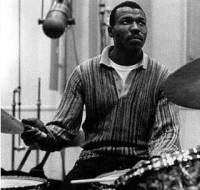
That was the Coltrane way: out with the new, in with the new new. A challenge to extend and advance and even, dare I say, improve upon a recording that many will tout as a medium’s finest. Its creator saw but a door-and a new direction-instead. But we must be careful not to confuse a high-water mark with an end, or a crowning. Even though Coltrane had already been many places jazz musicians had not previously, something about the album felt different.

By January of the new year-which proved to be Trane’s fieriest annum- A Love Supreme was in record stores. The turnaround from studio to factory to shelves was swift.

It’s numinous but not preachy, and simultaneously as secular as cutting through an alley to get to the bar faster.

Recorded in a single session with his indomitable Quartet on December 9, 1964, it almost makes sense as a variety of Christmas disc, an offering from the mind and soul of the true artist to a power beyond. Conventional wisdom-and many people’s understanding of jazz history-asserts that John Coltrane’s A Love Supreme is the saxophonist’s masterpiece.


 0 kommentar(er)
0 kommentar(er)
